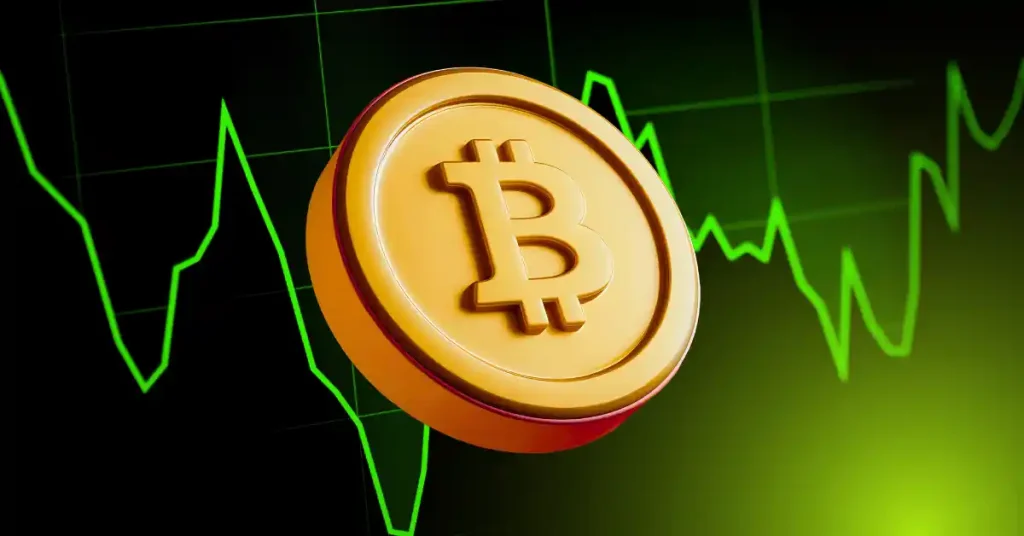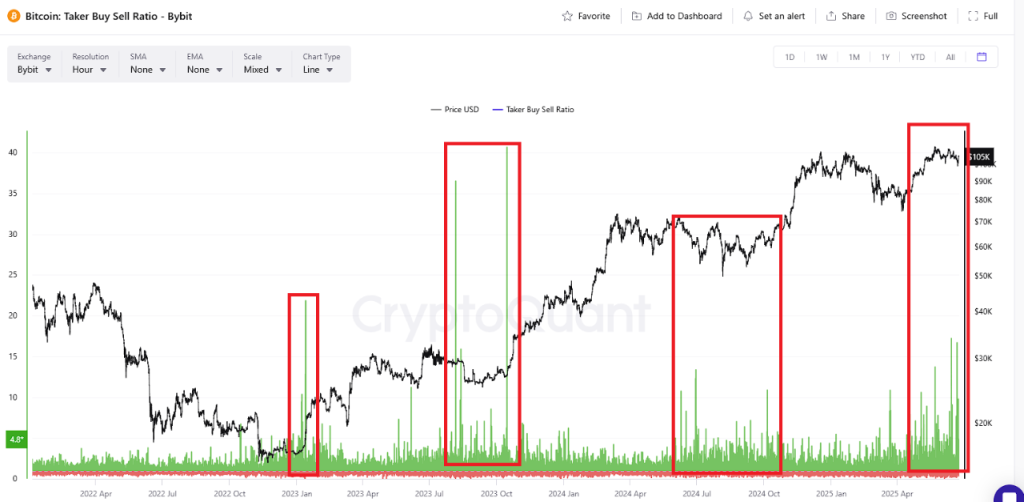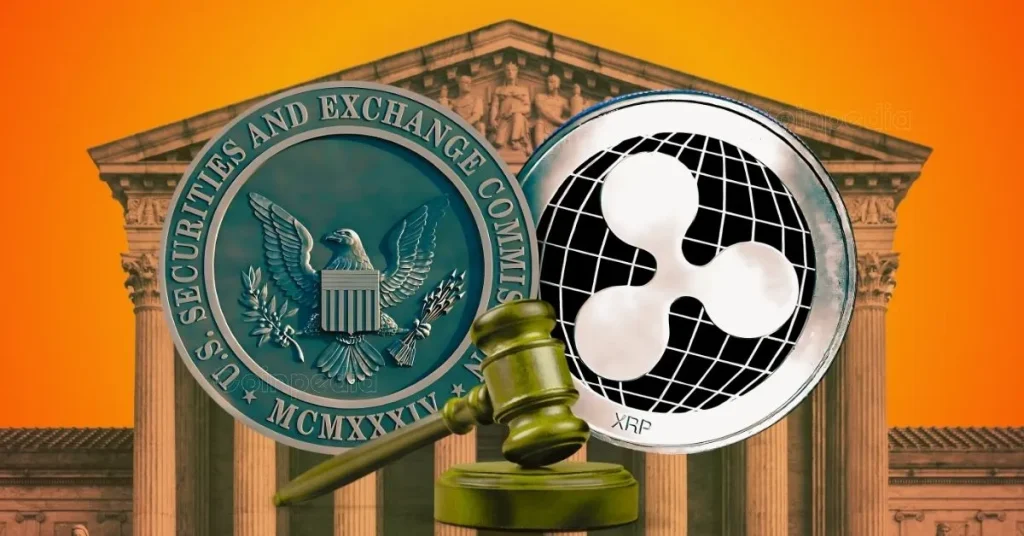
The post Bitcoin Price Holds Strong at $105K: Short Squeeze Ahead? appeared first on Coinpedia Fintech News
Bitcoin’s price held $105k in support on Tuesday, with reduced geopolitical tensions in the Middle East. It happened because Trump’s announcement of a ceasefire between Israel and Iran reawakened investors’ morale.
Even institutional interest in Bitcoin remains strong, with BTC ETFs recording $350.43 million in net inflows on Monday. In addition, exchange reserves this week fell from $2.491 million to $2.485 million, pointing to declining selling pressure in the short term, per cryptoquant.
Moreover, bullish interest seems to be high as the “taker buy to sell ratio” on the Bybit exchange has displayed significant spikes, and several expert bullish posts are flooded on social platforms where targets are aimed as high as $130K to $135K in Q3 2025. Keep reading to know more.
Bybit Exchange Reveals Investors Eyeing Opportunities in Bitcoin Dip
A recent analysis from Cryptoquant reveals that when market interest wanes in BTC, all data appears stagnant, making things easier to evaluate. In this scenario, a sudden footprint of smart money is easily tracked.
The activity starts revealing sudden spikes in the data of Bitcoin’s taker buy-to-sell ratio chart on the Bybit exchange, which were nearly stagnant before.

This highlights a significant pattern when overall market attention is drawn to a negative factor, and involvement becomes low due to rising fear. The whale accumulation has been seen to accelerate.
In many cases, smart money-loading bags have preceded with the upward trends.
The same pattern is repeating now, and spikes in the data amid the recent war uncertainty are evident. It highlights that the odds of a price rise are much higher.
Analyst Suggest Short Squeeze Incoming In Bitcoin Price
Recently, Daan Crypto highlighted that from May to June, the Bitcoin price was in a severe range between the month’s swing low support at $100K and near ATH around $109K.
The recent breach of swing low support during the heightened conflict, followed by a recovery from range lows, has built a big liquidity grab, which has hit many traders’ “stop-loss” orders. Now, experts believe the de-escalation could pump more gains ahead in the short term.
Aligning with the bullish sentiment, another expert has revealed that the Binance BTC/USDT liquidation heatmap on coin glass suggests that the current price is exchanging hands in the middle of two major liquidity leverage clusters.
Still, the topside liquidity cluster is piling up strongly per the 24-hour chart. He suggests that a short-term short-squeeze is coming, and the bull run is not over yet.
Moreover, in the long term, another expert, Ted Pillows, highlights that the recent war-led dip has changed nothing for BTC’s long-term trajectory. Instead, this dip has ensured that room for more upside is clear; he believes that $130K to $135K BTC price in Q3 is possible.
Never Miss a Beat in the Crypto World!
Stay ahead with breaking news, expert analysis, and real-time updates on the latest trends in Bitcoin, altcoins, DeFi, NFTs, and more.




 JUST IN: Judge Torres has denied
JUST IN: Judge Torres has denied 